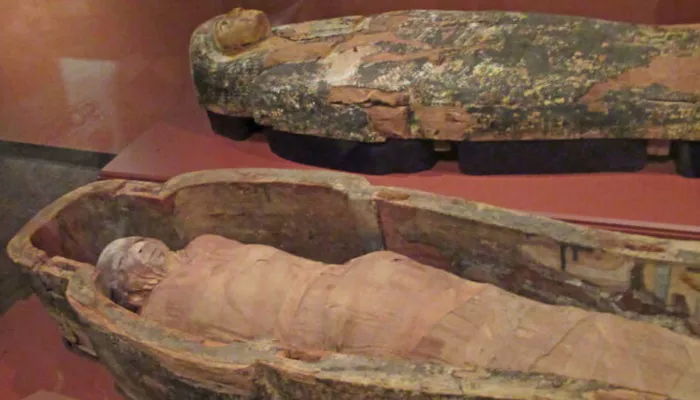As the lush summer greenery fades, only bare branches remain. Gardeners are now preparing their spaces for winter, carefully gathering fallen leaves and trimming back last season’s growth. This ritual, a blend of practicality and tradition, mirrors ancient practices in preparing human and animal souls for the afterlife. As gardens go dormant and Halloween approaches, let’s explore how horticulture connects to mummification.
Mummification was practiced across various ancient cultures, each influenced by local plant availability. In Egypt, for instance, priests used resins and oils from trees like cedar, juniper, olive, and pistachio, along with myrrh and elemi, to seal pores and act as adhesives. These plants were sourced from regions as distant as the Mediterranean, Southeast Asia, and tropical Africa. This demand for materials even drove trade across these areas. Flax-based linen wraps were then used to finish the process, resembling the iconic image of mummies in popular culture.
In South America, mummification practices spanned from the ancient Chinchorro culture, 7,000 years ago, to the Incas about 500 years ago. Here, organic materials were used more to prepare the dead for spiritual transitions than to preserve bodies. Anthropologists believe that increased intake of coca leaves and corn beer, starting a year before sacrificial ceremonies, kept participants in an altered spiritual state.
The mummification methods of these cultures would likely seem shocking by today’s standards. Embalming recipes used ingredients like fermented corn beer and seaweed, while body cavities were filled with local grasses, and structural elements were reinforced with sticks or canes. Bodies were often wrapped in reed mats for burial.
Modern science has shown that many of the plants used in these processes have antimicrobial properties, which helped prevent decay. Many of these ingredients were also highly fragrant, masking any residual odors. The choice of materials and the level of preservation often reflected the social status of the deceased, influencing how elaborate the process became and how far resources were sourced.
So, when a young mummy appears at your door this Halloween, consider tossing a cedar branch into their treat bag—it’s a nod to the ancient tradition.
Related topics:
- Burnham Area Flower Club to Host Christmas Floral Art Evening
- California Confiscates $353 Million Worth of Marijuana, Including Over 9,000 Plants in San Diego
- Scientists Believe Controlling Invasive Plants Can Reduce Ticks and Tick-Borne Diseases


